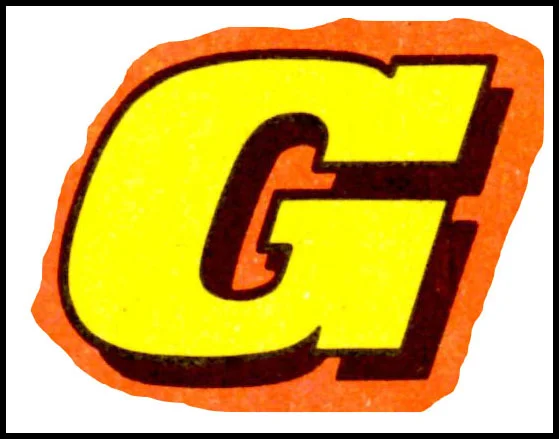On this day, 19 October 1985: Roy of the Rovers; book review: Real Roy of the Rovers Stuff by Barrie Tomlinson
Cover artwork: David Sque (artist)
On this day, 19 October 1985 … To Cut a Long Story Short, the Roy of the Rovers plot went a bit bonkers in the 1985/86 football season. As we saw earlier in the year, the season ended in unbelievable tragedy when most of the Melchester team were killed in a bus crash, having made it Through the Barricades of a Middle-Eastern hostage crisis. But the credibility of readers had already been stretched at the start of the season when Roy had decided to create a Lifeline for his struggling team by signing Gold-en oldie, ex-players (now TV personalities) Bob Wilson (Scotland, Arsenal, Football Focus) and Emlyn Hughes (England, Liverpool, A Question of Sport); cricket legend Geoff Boycott (as Rovers’ new chairman); and, yes, it’s True, feather-cut, New Romantic popsters Martin Kemp and Steve Norman of Spandau Ballet.
Wilson and Hughes, aged 43 and 38 respectively, went straight into Rovers’ starting line-up, but Roy seems to have had doubts over the inclusion of the Spandau boys. Instead, he played them in a reserve game, attracting a sell-out crowd to Mel Park, which must have pleased Mr Boycott. To Roy’s chagrin, Kemp and Norman played worldies, scoring a goal each and creating an entirely self-afflicted selection headache for the Highly Strung player-manager.
At the time, this all seemed a little far-fetched. In fact, now it all seems a little far-fetched. But credit is due to Roy of the Rovers editor Barrie Tomlinson for coming up with a plot development which is remembered, and marvelled at, thirty-one years later. I found this lovely clip from BBC Four’s excellent Comics Britannia documentary in which comedian Frank Skinner remembers the Spandau Ballet episode and Barrie himself reflects on business of creating headline-grabbing storylines for Roy:
It’s all lovely to see, especially having recently read Barrie’s book about being Roy’s editor – in Roy of the Rovers and his original home in Tiger. Like Steve MacManus’ The Mighty One, Real Roy of the Rovers Stuff gives great insight into the professional environment in which one of IPC’s most prolific and successful editors worked, and the thinking behind many of the creative decisions that formed our comic heroes. Barrie’s book is a shorter, quicker read than Steve’s, and his voice is that of one of the old school but it is nevertheless a fascinating and revealing book. Central to Barrie’s strategy with Roy of the Rovers was a determination to establish the strip – and the character of Roy himself – as a cultural icon. Unarguably, this was achieved – in part through the sterling work of writer Tom Tully and artists Hutton, Joe Colquhoun, Paul Trevillion, David Sque, Mike White and Barrie Mitchell, but perhaps none more significantly than Barrie himself, who dreamed up many of the plots that grabbed national headlines, constructed the press releases (often including specially written comments by Roy himself) and even ghost-wrote letters from Roy to take issue with observations made in the papers by well-known football writers.
Real Roy of the Rovers Stuff by Barrie Tomlinson (Pitch Publishing), cover artwork by Mike White
I disagree with Barrie on his belief (written in the book, and also expressed on the Comics Britannia clip) that Fleetway were wrong to cause Roy to end his career by losing a foot in a helicopter crash in 1993. Barrie feels that it was ill-advised to have ruled out any chance of Roy making a comeback and continuing his career. Personally, I think that the imposition of a definite conclusion to Roy’s playing career only enhanced the story that came before. We can appreciate it all the more for seeing it as a complete story, with a beginning, a middle and an end. That said, pretty much anything is possible in comics – as Barrie has demonstrated – and I’m sure Roy of the Rovers will continue in some form or another now that Rebellion own such valuable rights.
Hot-shot Hamish with Mighty Mouse: Fred Baker (writer), Julio Schiaffino (artist)
Harker’s War: John Wagner and Alan Grant (writers), artist unknown
Johnny Cougar, reprinted from Tiger: Barrie Tomlinson (writer), John Gillatt (artist)
The Team that Went to War, reprinted from Battle Picture Weekly: Mike Western (artist)
Roy of the Rovers: Tom Tully (writer), David Sque (artist)
Roy of the Rovers: Tom Tully (writer), David Sque (artist)
Roy of the Rovers: Tom Tully (writer), David Sque (artist)
Roy of the Rovers: Tom Tully (writer), David Sque (artist)
Roy of the Rovers: Tom Tully (writer), David Sque (artist)
Project 917: Ian Vosper (writer), John Stokes? (artist)
Project 917: Ian Vosper (writer), John Stokes? (artist)
Wayne’s Wolves: Fred Baker (writer), Yvonne Hutton (artist)
Dexter’s Dozen: Barrie Tomlinson (writer), Mike White (artist)
Goalkeeper: Gil Page (writer), Osvaldo Torta (artist)
Roy of the Rovers: Tom Tully (writer), David Sque (artist)



